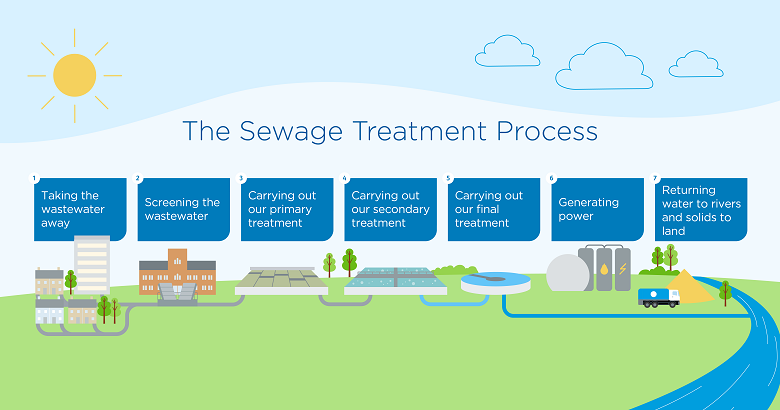Exploring Ingenious Technologies and Practices for Reliable Drainage Therapy Systems
Effective drainage treatment systems are vital for ecological sustainability and public health. In recent times, there has actually been an expanding emphasis on exploring innovative innovations and methods to boost the performance of these systems. From advanced filtration techniques to smart tracking systems and biological therapy advancements, the area of drainage therapy is witnessing a change. By integrating energy-efficient methods and using data-driven optimization methods, the capacity for boosting the performance of waste water therapy procedures is large. This evolution towards more reliable and lasting services not just profits the environment but likewise provides an engaging case for the innovation of drainage therapy systems in the future.
Advanced Filtering Techniques

Microfiltration entails the use of great membrane layers to separate fragments and microorganisms, while ultrafiltration targets even smaller impurities through finer pores. Nanofiltration deals with getting rid of natural molecules and divalent ions, and reverse osmosis is very effective in getting rid of liquified salts and various other pollutants. Waste Water Treatment. These methods not only aid in creating tidy water but also assist in reducing the environmental effect of wastewater discharges, making them essential elements of contemporary wastewater therapy systems

Smart Keeping An Eye On Equipments
The implementation of wise monitoring systems revolutionizes the oversight and administration of wastewater therapy processes, making certain ideal efficiency and compliance with regulative standards. These systems use innovative sensors, information analytics, and real-time surveillance to offer valuable understandings right into various specifications of the therapy process. This positive strategy allows for fast interventions to address issues prior to they rise, ultimately enhancing the total efficiency and efficiency of the treatment plant.
Organic Treatment Innovations
Biological therapy advancements have substantially advanced the effectiveness and sustainability of wastewater treatment processes. Overall, organic treatment advancements offer cost-efficient, environmentally pleasant solutions for wastewater therapy, advertising sustainable methods in water source management. Carrying out these technologies can lead to enhanced water top quality, decreased ecological influence, and enhanced resource recuperation in wastewater treatment systems.
Energy-Efficient Practices
In progressing the sustainability of wastewater therapy systems, energy-efficient practices play a critical role in enhancing functional prices and decreasing environmental influence. One vital energy-efficient technique is the implementation of sophisticated oygenation systems, such as fine bubble diffusers or surface area aerators, which boost oxygen transfer efficiency in biological treatment processes. By enhancing oygenation performance, therapy plants can reduce energy usage linked with aeration, a significant contributor to home general energy usage in wastewater treatment.
In addition, the combination of renewable resource resources, like photovoltaic panels or wind generators, can aid counter energy demands and decrease reliance on conventional nonrenewable fuel sources. Using energy recovery systems, such as warmth exchangers or biogas capture technologies, can also contribute to power financial savings by repurposing waste warmth and recording biogas generated during treatment processes.
Moreover, using power monitoring systems and progressed control approaches can maximize power use by changing operational parameters in real-time based upon differing therapy problems. Generally, integrating energy-efficient practices not only lowers functional expenses but also decreases the ecological footprint of wastewater treatment centers, you could check here lining up with sustainable growth objectives and regulative needs.
Data-Driven Optimization
Exactly how can data-driven optimization enhance the performance and efficiency of wastewater treatment systems? Data-driven optimization plays an important function in boosting the efficiency of wastewater treatment systems by making it possible for real-time surveillance, anticipating maintenance, and notified decision-making - Waste Water Treatment. By collecting and examining information from different sensing units and sources within the therapy plant, operators can obtain important understandings into the system's procedure, identify potential concerns before they rise, and optimize procedures to achieve much better outcomes
Via data-driven optimization, operators can implement predictive upkeep strategies that assist prevent devices failures and minimize downtime. By analyzing historic information and patterns, maintenance routines can be maximized, leading to cost savings and boosted system reliability. Furthermore, helpful resources real-time information surveillance enables instant discovery of abnormalities or discrepancies from ideal operating problems, enabling timely rehabilitative activities to be taken.
Additionally, data-driven optimization assists in data-driven decision-making by providing operators with actionable understandings and referrals based upon information analysis - Waste Water Treatment. This enables constant renovation and optimization of wastewater therapy procedures, leading to enhanced effectiveness, minimized functional costs, and improved general performance of the system
Final Thought
To conclude, the expedition of ingenious modern technologies and techniques for reliable drainage therapy systems has shown promising results in improving filtering techniques, checking systems, organic therapies, power effectiveness, and data optimization. These improvements are important in resolving the expanding difficulties of water shortage and contamination. By executing these solutions, we can ensure reliable and lasting administration of wastewater resources for the benefit of both the setting and culture.
From sophisticated filtration techniques to wise monitoring systems and organic therapy advancements, the field of waste water therapy is observing a makeover.Biological treatment technologies have actually considerably advanced the efficacy and sustainability of wastewater treatment processes. On the whole, biological treatment technologies use affordable, environmentally friendly solutions for wastewater therapy, promoting lasting practices in water source administration. By boosting oygenation effectiveness, treatment plants can decrease power usage associated with aeration, a significant factor to general power usage in wastewater therapy.
In conclusion, the expedition of innovative modern technologies and methods for efficient waste water therapy systems has revealed promising results in boosting filtration techniques, keeping track of systems, organic treatments, power efficiency, and data optimization.